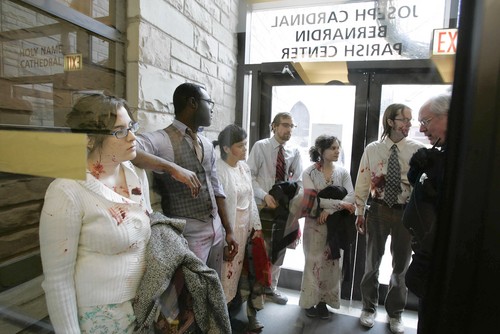Easter is one of those odd holy days turned secular holidays that creates a lot of incongruous images. Why do we have baskets with marshmallow bunnies instead of a nougat filled crucifix? Perhaps it is that kind of visual confusion that lead a group of protestors to create a new kind of visual Easter mix up.

On Sunday , a group calling themselves Catholic Schoolgirls Against the War stood up in Chicago’s Holy Name Cathedral right before Cardinal Francis George’s homily and sprayed stage blood on themselves and other worshipers. The gaps between visual display and reality are as confused here as they are between the Easter story and Peeps.
Recent comments
2 years 29 weeks ago
2 years 44 weeks ago
2 years 44 weeks ago
2 years 50 weeks ago
3 years 4 weeks ago
3 years 4 weeks ago
3 years 4 weeks ago
3 years 6 weeks ago
3 years 6 weeks ago
3 years 6 weeks ago